You may have already learned about our sauerkraut production or red cabbage production on our pages - but this may also be the first page you read about us. We focus on regional cultivation and production in Germany. Of course, this also applies to our gherkins. Have you ever wondered how they are grown? Or when they are harvested and then processed? If you'd like to know, then you've come to the right place. We'll show you the steps and start in the greenhouse. Are you in?
Gherkin production:
From the field to the jar
On this page you learn how we grow gherkins and about their journey until they reach your home.


First in the greenhouse, then in the field - the young gherkin plant
Ah, the gherkin plant! She doesn't always make it easy for us, but our years of experience have taught us exactly what's important. Why we sigh here? Let's put it in the words of Günter Hekler, one of our farmers, "The gherkin plant is a little princess." What he means is that plants are considered sensitive. The reason for this is that they need a lot of care in the form of warmth when they are young. But before you get the wrong impression here: We really love growing really good gherkins in Germany for generations.
But now for the first steps: Before we can put our young gherkin plants in the field, we have to sow the seeds in the greenhouse. There we can ensure consistent conditions, which is enormously important for them. In spring, when the temperatures climb a little, we plant them. At this stage, they have a germination capacity of 95 %. When small plants have emerged from the seed, we move them into the field. And then it's a matter of hope.
As much as we are worried that the gherkin plant will make it through in spring, we have to be careful around 50 days later that it doesn't grow too big too fast. If our farmers don't harvest in time, the gherkins will still taste fantastic - but they won't fit in the jar. On a warm summer night, a gherkin can actually grow two to three centimetres.


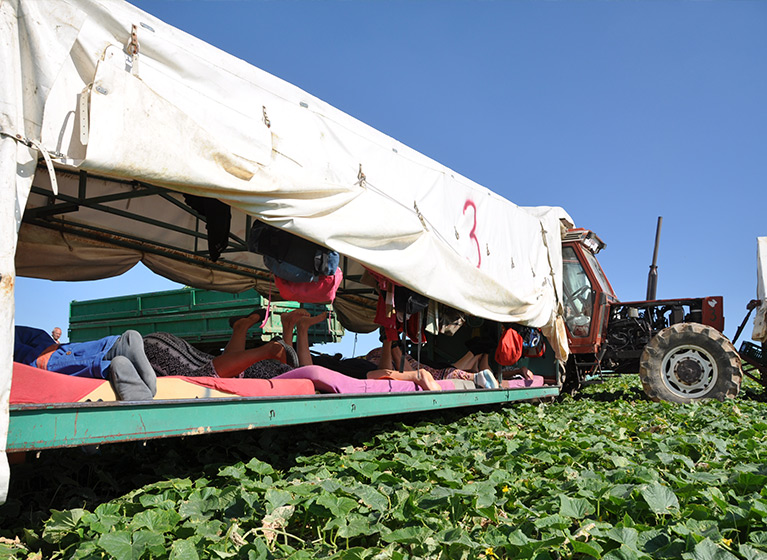
The harvest: manual labour on “gherkin planes”
The gherkin is a seasonal product and can only be freshly harvested and processed during ten weeks a year. With special care, harvesters pick each gherkin by hand, did you know that? They do this lying on their stomachs on a so-called "gherkin plane". This vehicle bears its name with good reason. The machine has two wings - like an airplane - with which it "flies" very slowly over the cultivated areas. The harvesters lie on the wings, which is the best way to grab the gherkins. They then place the picked gherkins on a conveyor belt that transports them to the loading area of a trailer.

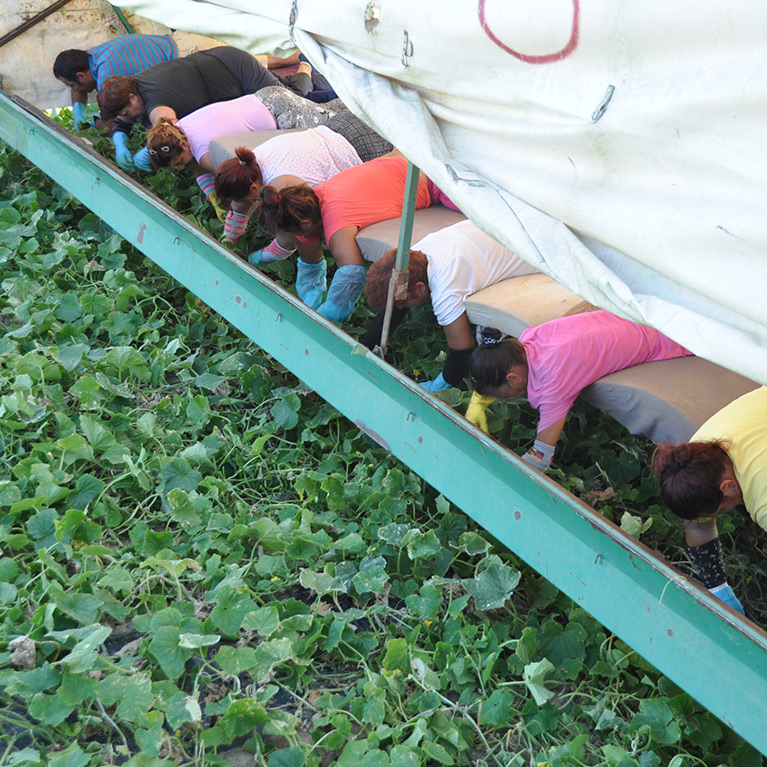
Fresh to the factory - the gherkins arrive within about 20 km
Speed and short distances are essential when processing of the gherkin harvest. This is the only way in which the gherkins remain crunchy in the jar and intensely take on the flavour of the vinegar infusion. Most of our gherkins have a particularly short journey from the field to the factory. This is because the cultivation areas of our farmers are only about 20 kilometres away from the factory.

Washing and sorting
After the delivery to our factories, the gherkins are first sorted. Pre-sorting of the gherkins is done by machine, but we do the final selection ourselves.
The watchful eye and experiences hand of our staff check the gherkins for size and quality. After that, they have earned a cooling in the water bath: they are washed box by box. An important step for our product.
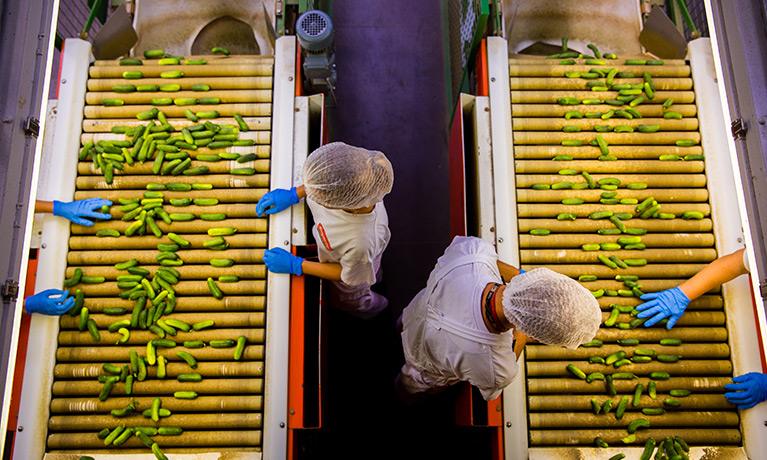

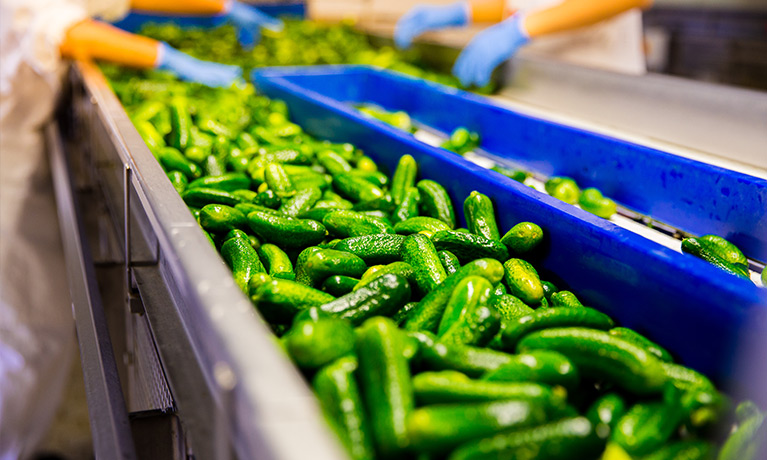

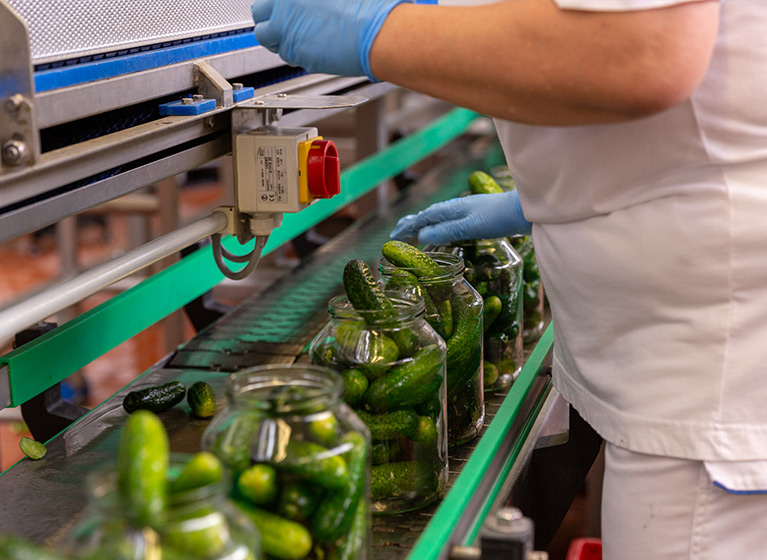
The way of the gherkin into the jar
When the selection is done, the jars, which are mechanically equipped with spices, are filled with the gherkins. They slide into the jars via a vibrating plate. A scale rejects all jars that are too heavy or too light. We then correct these by hand.

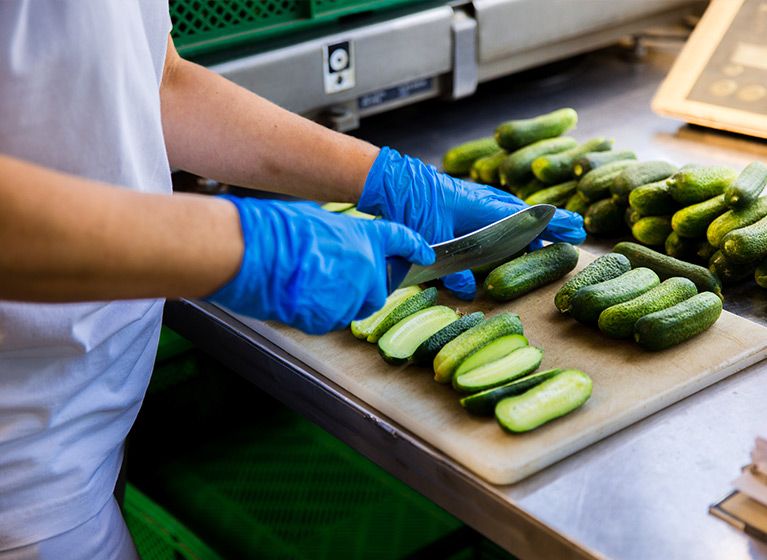
Important intermediate step: Quality control!
The quality of our raw materials and processing has top priority. And we do a lot to ensure this: During production, samples are taken every 30 minutes, laboratory values are checked, weights are controlled, the infusion is tested, pasteurization is monitored, and the sealing and packaging are inspected. This is how we guarantee that only the best products end up on the shelf.

How to proceed: vinegar infusion and pasteurisation
For the typical taste, the gherkins are infused with vinegar. Then a powerful blast of steam ensures that a vacuum is created in the space between the lid and the content when the jars are closed. You probably know the sound when you open one of our KNAX jars, for example.
Pasteurisation of the gherkin jars keeps them fresh for a long time. They are gently heated in the sealed jars. In this process, the gherkins not only keep their crunchiness, but also valuable ingredients such as vitamins and minerals. By the way, there are no preservatives added to the jar.


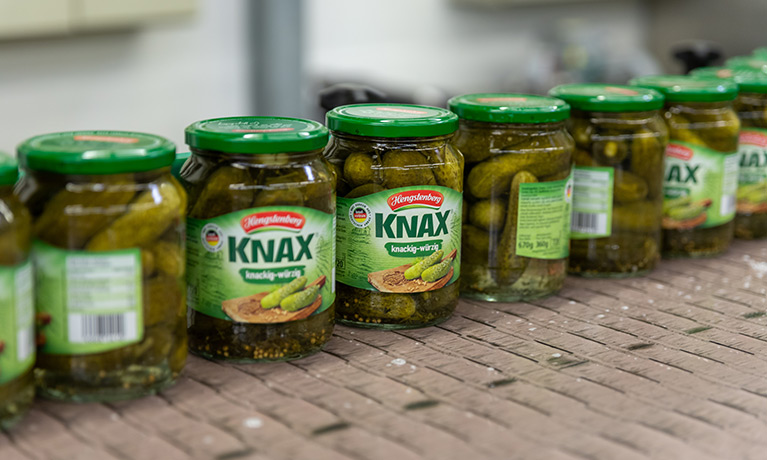
The final stage: Labelling, packing and storing gherkins
All that's left to do is to label, pack and store the jars of our gherkins. All this is done fully automatically. Storage is actually not unimportant, because it takes at least another two weeks for the pickles to have the full flavour of a Hengstenberg gherkin. But don't worry - no gherkin will end up on your plate without this storage period.

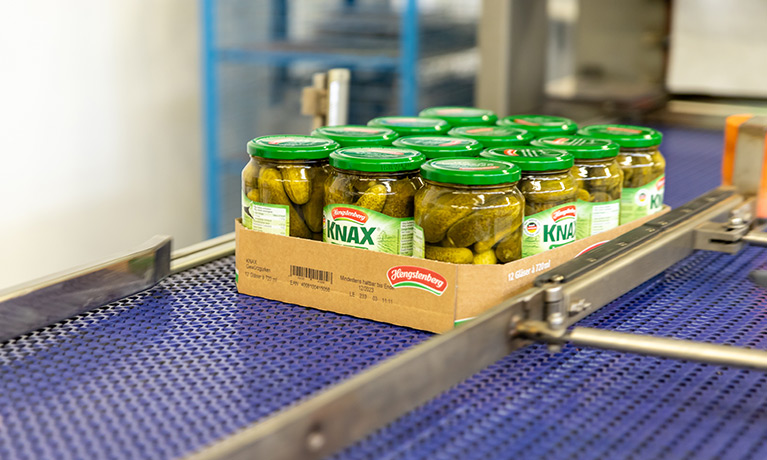

You have now seen all steps of our gherkin production - from the field to your plate. This is how the best German products for authentic taste are created. And what you can do with this taste, we tell you in our recipe section.



